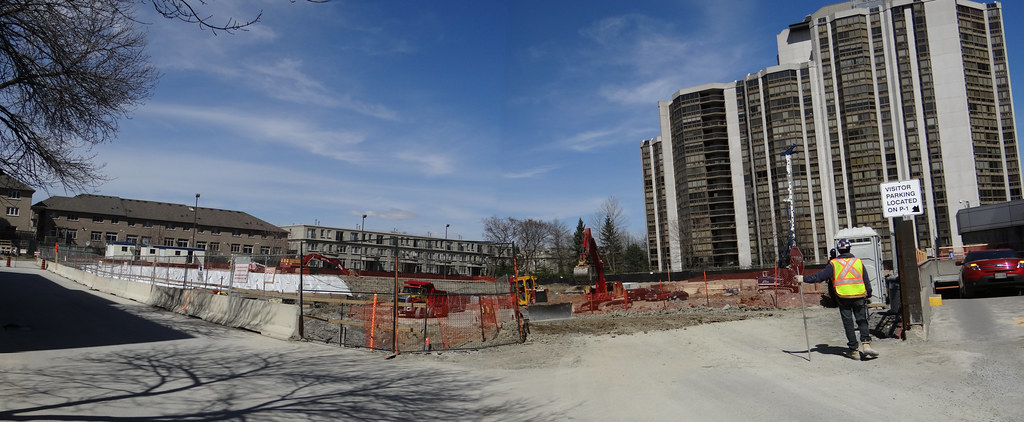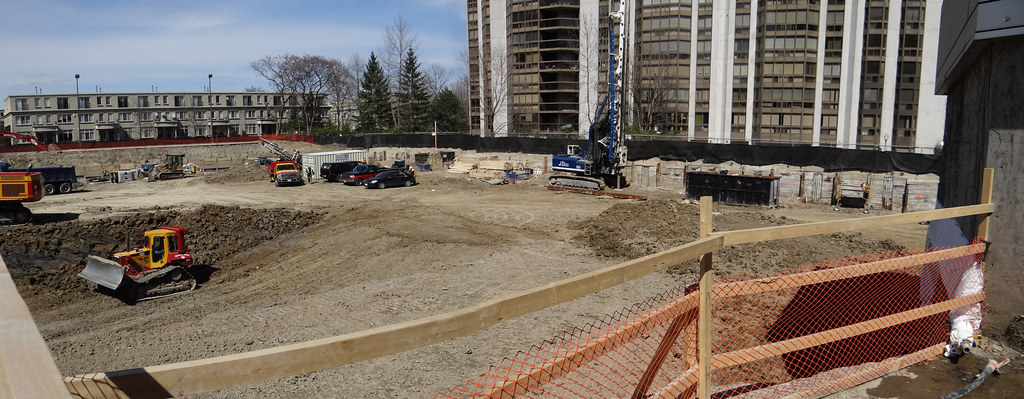Brooder3
New Member
In response:
You have two subway lines serving the area. Bring on the intensification!
The fact that “you have two subway lines serving the area†has little relevance to many of the traffic problems in the immediate area of this project. As the City Councillor mentioned at the meeting, the planners who decided that this section of North York should undergo drastic intensification 25 or so years ago “assumed†that the majority of the residents would use subways for the bulk of their commuting. However, he stated that the reality is that the vast majority of residents in the area have chosen and continue to choose to use their cars, notwithstanding the “two subway lines in the areaâ€.
Therefore, the “bring on the intensification†mantra will only result in additional road traffic chaos in the area, along with the accompanying pedestrian safety problems. What is even more troubling is the large number of students who must navigate the already dangerous intersections on their way to and from both the Cardinal Carter School for the Arts (grades 7 through 12), and the younger children who attend the Claude Watson School for the Arts, which is an elementary school serving grades 4 through 8. The “two subway lines in the area†have little relevance to this problem.
That (the hydro problems) needs to be fixed whether the tower goes in or not.
With respect to the numerous blackouts in the area, nobody at Hydro or the City of Toronto appears to be willing to accept responsibility for this problem. I (as have some of my neighbours) have contacted various officials on several occasions, and all they do is “pass the buck†(that is, if they are even willing to admit that the problem exists.) It appears to be an example of a lack of accountability that is present at the municipal, provincial and federal levels of government.
The take-away message from this post is that local residents can only ever see the sky falling when something new gets proposed. In places where there is this much infrastructure, more density is inevitable. If you want peace and quiet, go find a farm on the outskirts that's being ploughed under for suburban tract housing. If you'd prefer to stay where you are, and you want to make the place you already live better, than try to work with your local city councilor and planners and the developer to ensure improvements to the public realm, both aesthetic and practical, as new density comes to town - - - because it's coming, and that's not going to stop.
“Try to work with your local city councillor and planners and the developerâ€? I don’t think so. The councillor stated that he had “no knowledge of the hydro infrastructure problemsâ€. The City Planning Department states that hydro infrastructure is not its responsibility, and that Toronto Hydro was not even consulted with respect to this development project. Toronto Hydro claims that “this matter does not fall under our purview – ask the City Planning Department!†Finally, the developer understandably denies that any infrastructure or traffic safety and congestion problems even exist (several attendees at the meeting inferred that the developer’s traffic studies were biased).
I, along with some other local residents, am not opposed to intensification per se in urban areas, as long as the critical infrastructure is maintained and upgraded to support such intensification. This clearly has not occurred in the Yonge-Sheppard area.
You have two subway lines serving the area. Bring on the intensification!
The fact that “you have two subway lines serving the area†has little relevance to many of the traffic problems in the immediate area of this project. As the City Councillor mentioned at the meeting, the planners who decided that this section of North York should undergo drastic intensification 25 or so years ago “assumed†that the majority of the residents would use subways for the bulk of their commuting. However, he stated that the reality is that the vast majority of residents in the area have chosen and continue to choose to use their cars, notwithstanding the “two subway lines in the areaâ€.
Therefore, the “bring on the intensification†mantra will only result in additional road traffic chaos in the area, along with the accompanying pedestrian safety problems. What is even more troubling is the large number of students who must navigate the already dangerous intersections on their way to and from both the Cardinal Carter School for the Arts (grades 7 through 12), and the younger children who attend the Claude Watson School for the Arts, which is an elementary school serving grades 4 through 8. The “two subway lines in the area†have little relevance to this problem.
That (the hydro problems) needs to be fixed whether the tower goes in or not.
With respect to the numerous blackouts in the area, nobody at Hydro or the City of Toronto appears to be willing to accept responsibility for this problem. I (as have some of my neighbours) have contacted various officials on several occasions, and all they do is “pass the buck†(that is, if they are even willing to admit that the problem exists.) It appears to be an example of a lack of accountability that is present at the municipal, provincial and federal levels of government.
The take-away message from this post is that local residents can only ever see the sky falling when something new gets proposed. In places where there is this much infrastructure, more density is inevitable. If you want peace and quiet, go find a farm on the outskirts that's being ploughed under for suburban tract housing. If you'd prefer to stay where you are, and you want to make the place you already live better, than try to work with your local city councilor and planners and the developer to ensure improvements to the public realm, both aesthetic and practical, as new density comes to town - - - because it's coming, and that's not going to stop.
“Try to work with your local city councillor and planners and the developerâ€? I don’t think so. The councillor stated that he had “no knowledge of the hydro infrastructure problemsâ€. The City Planning Department states that hydro infrastructure is not its responsibility, and that Toronto Hydro was not even consulted with respect to this development project. Toronto Hydro claims that “this matter does not fall under our purview – ask the City Planning Department!†Finally, the developer understandably denies that any infrastructure or traffic safety and congestion problems even exist (several attendees at the meeting inferred that the developer’s traffic studies were biased).
I, along with some other local residents, am not opposed to intensification per se in urban areas, as long as the critical infrastructure is maintained and upgraded to support such intensification. This clearly has not occurred in the Yonge-Sheppard area.


